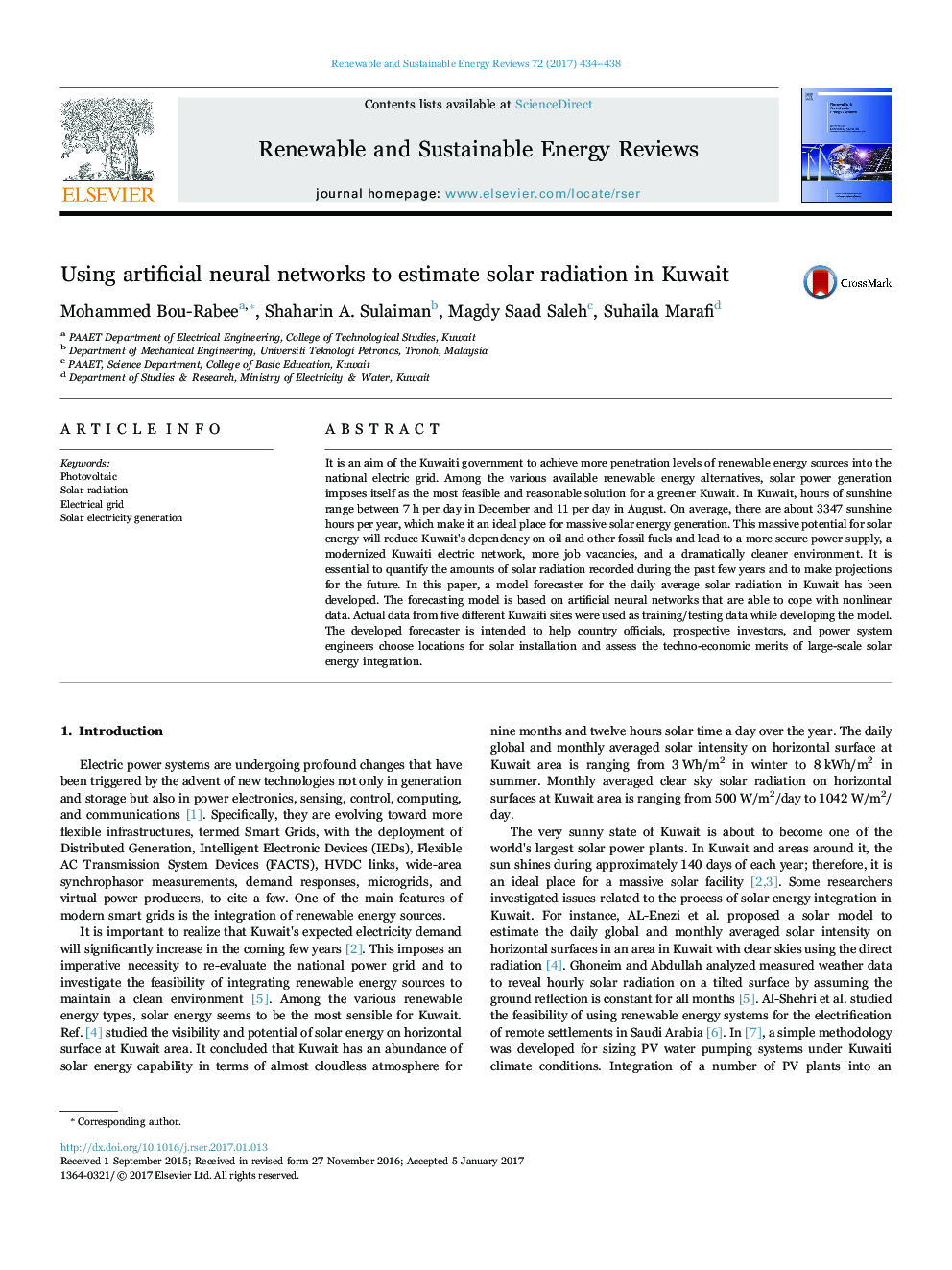| Article ID | Journal | Published Year | Pages | File Type |
|---|---|---|---|---|
| 5482377 | Renewable and Sustainable Energy Reviews | 2017 | 5 Pages |
Abstract
It is an aim of the Kuwaiti government to achieve more penetration levels of renewable energy sources into the national electric grid. Among the various available renewable energy alternatives, solar power generation imposes itself as the most feasible and reasonable solution for a greener Kuwait. In Kuwait, hours of sunshine range between 7Â h per day in December and 11Â per day in August. On average, there are about 3347 sunshine hours per year, which make it an ideal place for massive solar energy generation. This massive potential for solar energy will reduce Kuwait's dependency on oil and other fossil fuels and lead to a more secure power supply, a modernized Kuwaiti electric network, more job vacancies, and a dramatically cleaner environment. It is essential to quantify the amounts of solar radiation recorded during the past few years and to make projections for the future. In this paper, a model forecaster for the daily average solar radiation in Kuwait has been developed. The forecasting model is based on artificial neural networks that are able to cope with nonlinear data. Actual data from five different Kuwaiti sites were used as training/testing data while developing the model. The developed forecaster is intended to help country officials, prospective investors, and power system engineers choose locations for solar installation and assess the techno-economic merits of large-scale solar energy integration.
Related Topics
Physical Sciences and Engineering
Energy
Renewable Energy, Sustainability and the Environment
Authors
Mohammed Bou-Rabee, Shaharin A. Sulaiman, Magdy Saad Saleh, Suhaila Marafi,
